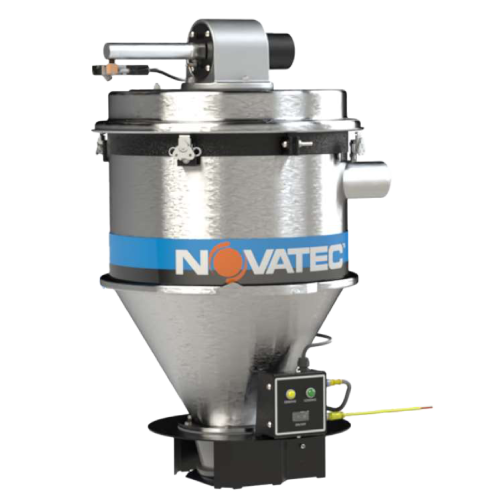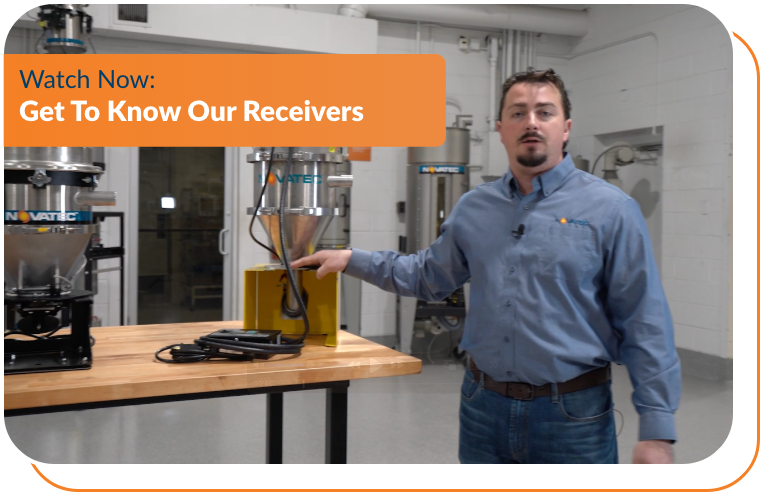Vacuum Receivers Designed for Seamless Material Flow
Reliable Conveying. Maximum Efficiency. Minimal Maintenance.
- Cost-effective, low-maintenance, & specialty receivers.
- Reduce downtime with smart, operator-friendly features.
- We’ve got the right receiver for your material handling needs.
Find the Best Receiver for Your Process

VR Series

VRX Series

Specialty Receivers
Feature
Workhorse Reliability
Enhanced Performance
For Powders & Ultra-Fines
![]() Filter Cleaning
Filter Cleaning
![]() Station Valve
Station Valve
![]() Flapper
Flapper
![]() Lid Assembly
Lid Assembly
![]() Cleanout
Cleanout
![]() Price (Starting At)
Price (Starting At)
Optional Blowback
Optional
Gravity Flapper
Fixed
Fixed
$930
MicroBurst™
Integrated
SureSeal™
Hinged
Tilted
$1550
Auto Blowback
Powder-Optimized Discharge
PTFE-Coated Fibers
VR Series – The Trusted Industry Standard
Dependable Material Transfer for Pellets & Regrind
5 to 190 lb. (2.2 to 86 kg) Capacity
- A proven design used across the industry from consistent performance.
- Optional blowback system keeps filters cleaner, reducing manual maintenance.
- Gasketed gravity flapper ensures smooth discharge for free-flowing materials.


VRX Series – Engineered for Smarter Conveying
Gold Standard Performance with Streamlined Maintenance
12 to 114 lb. (5.4 to 51.7 kg/hr) Capacity
- Integrated sequencing valve eliminates extra wiring for faster setup.
- MicroBurst™ Blowback & SureSeal™ flapper improves efficiency and discharge reliability.
- Hinged lid & tilt cleanout allow for easy, tool-free access during maintenance.
Specialty Receivers – Built for Challenging Materials
VRP Series – Optimized for Powders & Fine Material
Reliable Conveying for Powders, PVC, & Ultra-Fine Resins
12 to 76 lb. (5.5 to 34 kg) Capacity
- Designed specifically to handle fine powders & materials prone to clogging.
- PTFE-coated filters provide superior airflow and reduce dust buildup.
- Automatic blowback system clears filters after each cycle, minimizing maintenance.

Find the Right Receiver for Your Application
- Whether you need a rock-solid industry standard, a low-maintenance upgrade, or a specialized receiver for powders – we have the right solution.
- Our team helps you select the best receiver for your needs – so you get reliable performance without overpaying for unnecessary features.
- No sales pitch. No pressure. Just a straightforward conversation about what works best for your plant.

Let’s figure it out together!

Now Let’s Talk Pumps & Controls
Learn how to choose the right vacuum pump & central control for your receiver.

